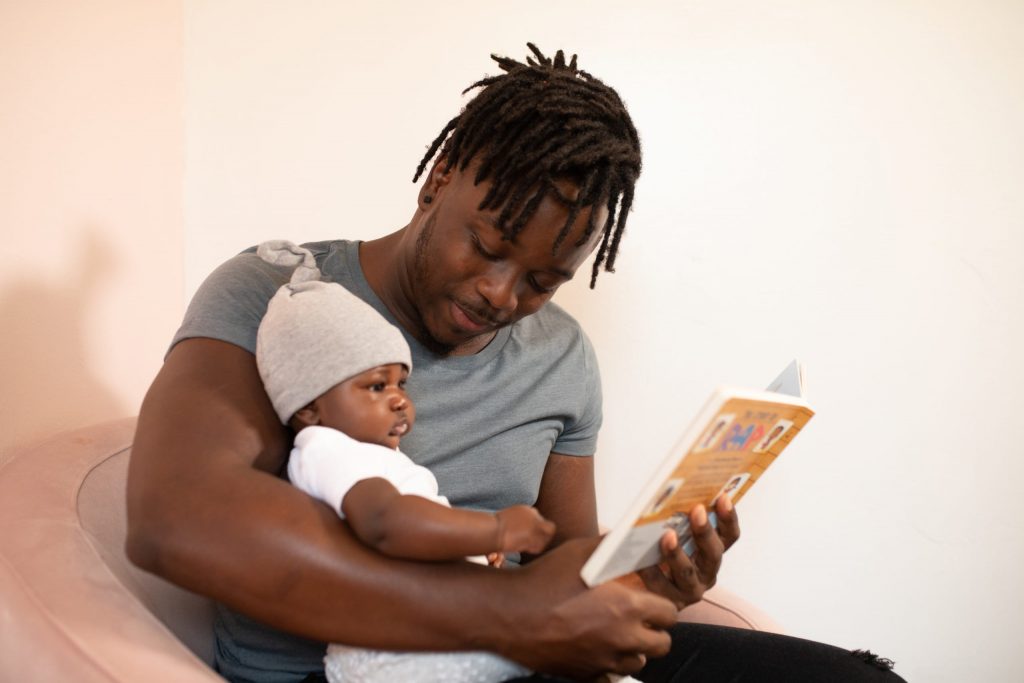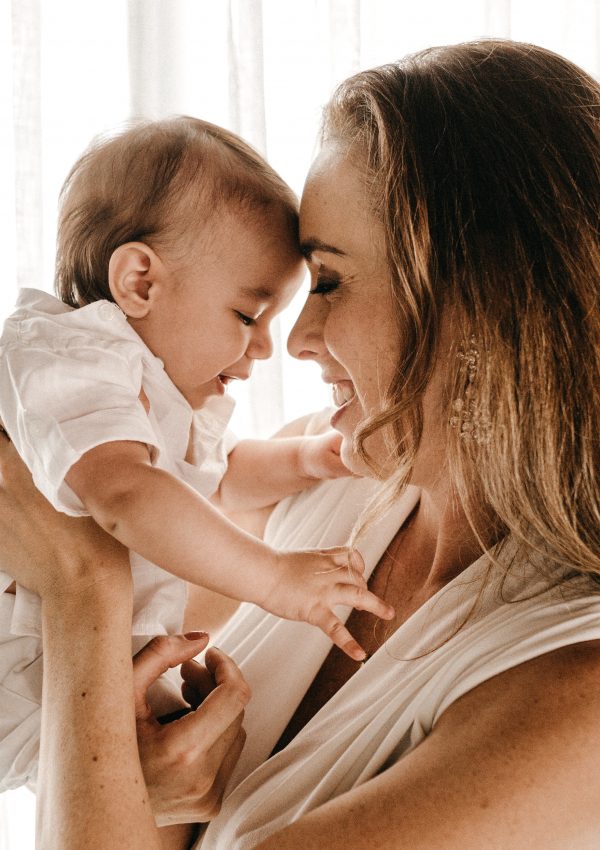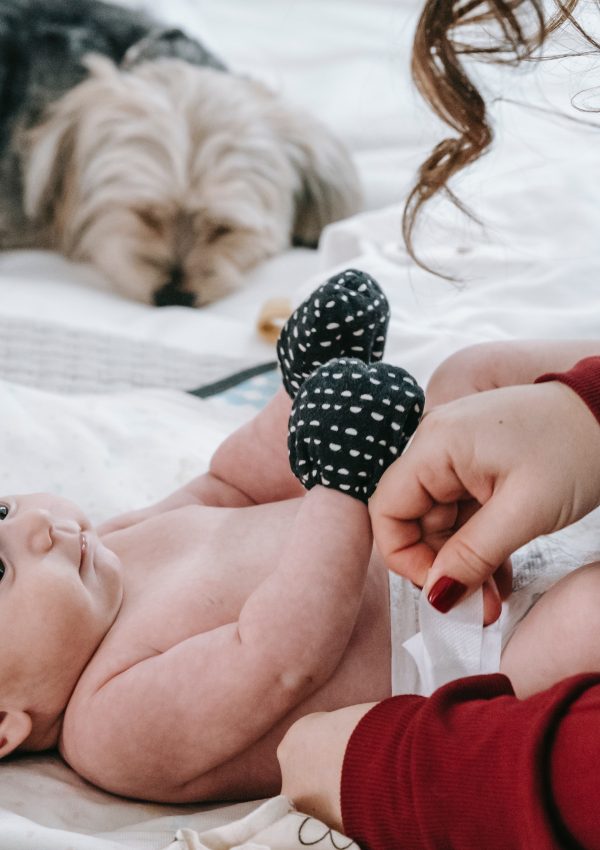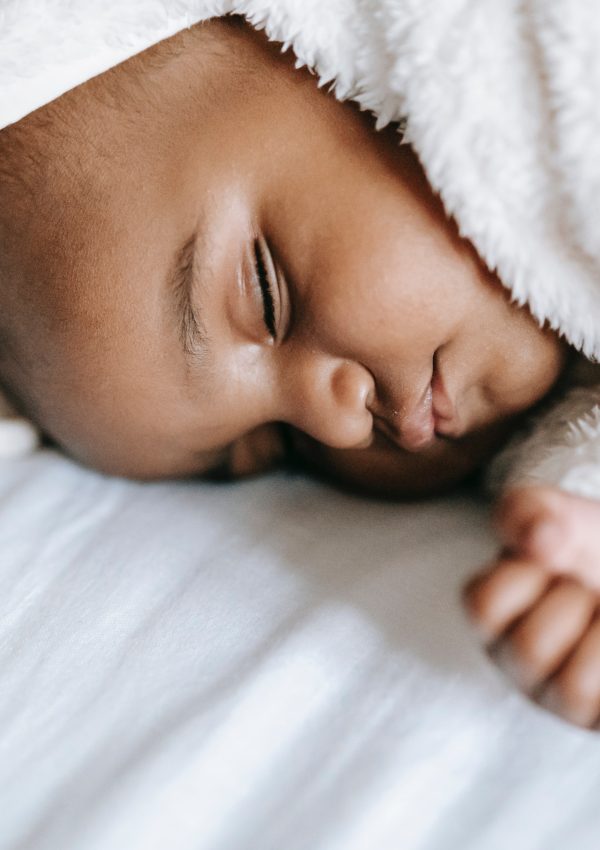Traveling with your little one and worried about how he or she will sleep? Here’s how you can get your baby to sleep in a different place.
This post may contain affiliate links, which means I’ll receive a commission if you purchase through my links, at no extra cost to you. Please read full disclaimer for more information.
Traveling with a baby is inevitable. We all have to live our lives. However, being away from home may be difficult for your little one to get used to. Typically around the age of 8 to 10 months, babies start to become more aware of their surroundings. You’ll notice that they may cry more when it’s nap time in a different place or start to get shy.
These things are normal. Whatever the case, it’s going to require some patience because your first overnight trip may not be perfect. Eventually, your little one will get used to sleeping away from home and it’ll become a breeze.

This post is all about how to get your baby to sleep in a different place.
8 ways to get your baby to sleep in a different place
1. Bring familiar bedtime necessities
The first, and probably the most important tip, is to bring familiar bedtime necessities. To ease the transition toward being away from home, you’ll want to create an environment similar to the one at home. Below are some good ideas of what you can bring with you:
Portable Playpen
The #1 bedtime necessity you’ll want to bring with you is a portable playpen (or pack n’ play). Until your little one gets used to sleeping in a different place, a consistent playpen will help with the adjustment. Once he or she is older and understands travel, it’ll be easier to use other cribs or playpen on the go.
You’ll also want to bring the mattress that accompany your playpen so it feels more like a crib mattress. Portable playpens should be easy to maneuver and have a mattress that can fit in the bag. Having one that is easy to travel with will make your life that much easier.
Sheets
Crib sheets are also really important to bring, especially if you’re staying in a hotel. You can never be too sure how well their linen is cleaned and you’re going to want to be careful since your baby’s skin is sensitive.
Lovies
Any lovie that your baby sleeps with is also great to bring. It’ll give him or her a familiar object for use to self soothe and provide that same feeling of being at home!
Pacifiers
If you baby needs a pacifier to sleep, definitely bring a few! We usually bring 3 to 4 just in case they get misplaced sometime during the trip. Similarly to the lovie, it’ll provide that familiarity of bedtime at home.
Night light
If your little one sleeps with a night light, bring it if you can! It’s usually not something you would think about while packing but it’ll make a world of a difference.
Sleep sacks
Sleep sacks are also a must-have if you use them. When we travel with our baby we try to be as careful as possible with her sleep items. Same thing goes for any blankets you use. If it’s possible to fit them in your bags, do it!
2. Copy your set up at home
Depending on where you’re going, you could try copying your baby’s bedtime set-up at home. Below are the two main ways you can do so:
- Black garbage bags to mimic black out curtains – obviously you can’t pack your curtains to travel, but black garbage bags are a great makeshift option if your baby sleeps in the dark. Hotels and vacation spots usually have black out curtains, but if you’re staying with friends or family, it’s not a guarantee.
- Temperature – if you can help it, adjust the temperature where the baby will be sleeping to what it would be like at home. This isn’t the most realistic on-the-go so be sure to pack the necessary clothes for baby in case it’s too warm or too cold.
3. Keep your usual bedtime and nap routines

You’re going to want to keep your bedtime and nap routines as close as possible to how you do it at home. If you read a book with baby before nap or bedtime, bring one or two books from home. If baby is used to a bath before bed, do it if possible! The key to successful sleep away from home really is consistency.
You may also want to add a bit of a time buffer when it comes to sleep. If it usually takes baby 15 minutes to fall asleep at home, start the routine 10-15 minutes earlier. Starting earlier will help prevent baby from getting overtired, which will make it even harder for he or she to fall asleep.
4. Try white noise
White noise is a sleep must-have on-the-go. It drowns out the noise around your little, which is a life-saver, especially if you have to share a room. White noise also has a calming effect and can help baby fall back asleep if he or she wakes up. If you can’t take your white noise machine with you, there are other options.
You can download a white noise app, see if your baby monitor has white noise built-in, or buy a portable white noise product which is perfect for stroller or carrier naps.
5. Bring your baby monitor
Although you may have a pretty good handle on your baby’s sleep habits at home, they may be thrown off in a different environment. You’ll want to make sure you bring your baby monitor so you can keep an eye on little one just in case they’re having a rough time adjusting.
The baby monitors with wifi are excellent, however, not always ideal. If you know you’re going to be in an area without a secure connection (i.e. public hotel wifi), you’ll want to bring a baby monitor that doesn’t use wifi. Good wifi baby monitors will not allow you to use the internet if it’s not secure, so always check for that.
6. Be patient and manage your expectations
If you’re on a vacation in Disneyworld you’re probably not going to go back to your hotel multiple times a day to make sure baby gets those naps in. It’s not realistic. Depending on the age of your baby, having he or she nap in the carrier or in the stroller is a great option.
If baby is used to being at home, being in a different environment will likely overstimulate them, thus keeping them awake and alert. That’s why when it’s time for bed you’ll want to try your best to stick to your usual routine. This way, they can make up for any sleep that was lost during the day.
When you’re trying to get your baby to sleep in a different place, it’ll be an adjustment for the whole family and you’ll have to be patient. Understand that the first day or night may be tough and maybe even the second and third nights.
They key is to keep going for it and living your life. Kids are resilient and they will adjust eventually. If you have patience and manage your expectations, your positive attitude will have a good impact on your baby as well.
7. Be prepared if things don’t go as planned
When you’re sleeping in a different environment, your usual routine may fly out the window. You may co-sleep when you usually don’t or baby may take 1 nap instead of 3. You’ll want to stick to your usual routine when you can, and adjust when you can’t.
Here are some ways that you can adjust without too much hassle:
- Bring your usual items baby would need to self-soothe like teethers, pacifiers, lovies, and toys, in case they get cranky.
- Nurse and offer a bottle more often. Your little one may get distracted by the new surroundings and not eat as much, which can cause trouble sleeping.
- Bring organic food pouches if your baby has started eating solids. There may be mixed opinions on this but they are always fine in moderation as long as you pay close attention to the ingredients. They are great for a quick meal or snack if there isn’t enough time for baby to feed themselves.
8. Keep baby active

Lastly, one of the best ways to get your baby to sleep in a different place is to keep them active during their wake windows. Being in a different environment alone should do the trick, but you’ll want to bring any toys or books that keep them engaged.
Another way you can keep the baby active is by being outside. If the weather permits, any time outside is great for added mental stimulation. You can also talk to them and explain all of the new things they’re seeing around them. You just have to get creative!
This post was all about how you can get your baby to sleep in a different place.




